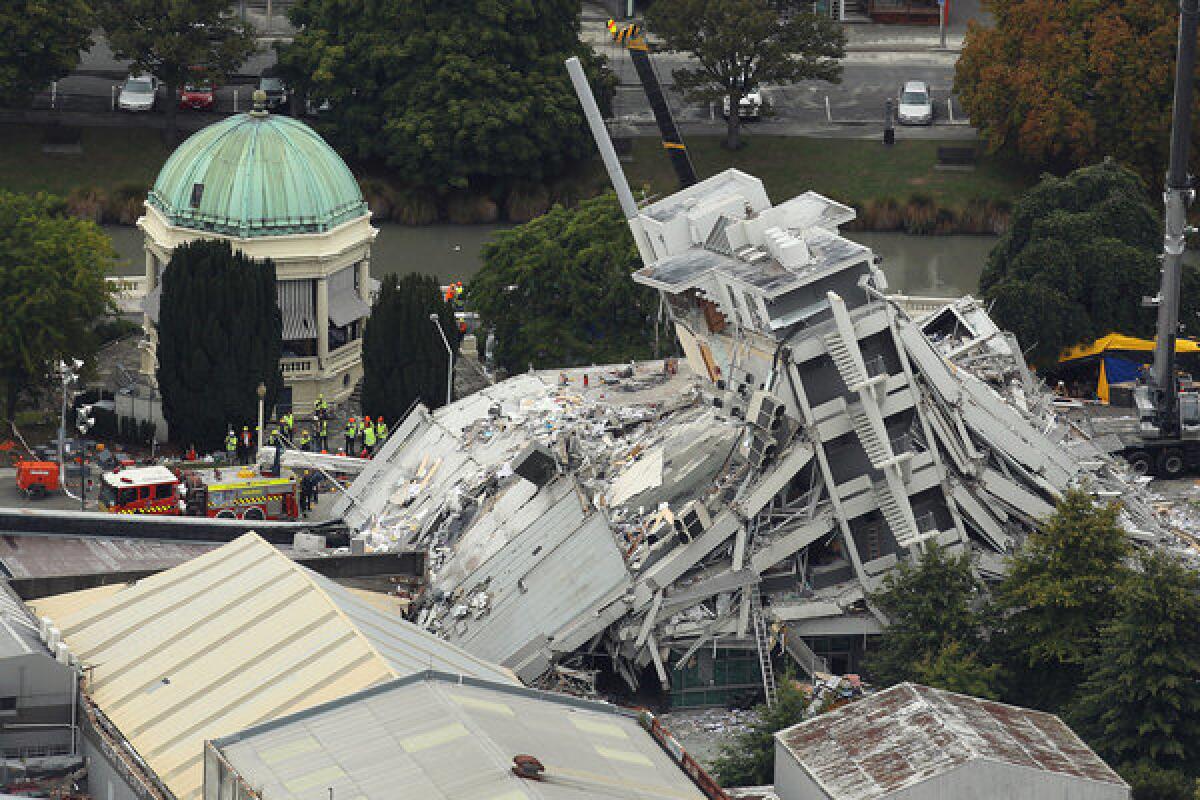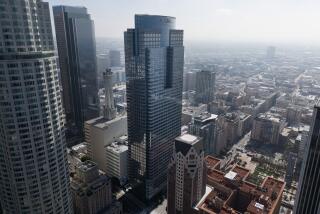How a New Zealand earthquake led to building reforms

- Share via
The 6.3 magnitude earthquake that devastated Christchurch, New Zealand, in 2011 toppled buildings, upended roads and even liquefied the ground under some communities, causing them to sink. The historic city saw the soaring brick spire of the ChristChurch Cathedral topple and another 19th century landmark church crumble to the ground.
But residents were stunned to learn that two-thirds of the 185 people killed in the city were in two more modern, seemingly solid concrete office buildings that fell down with the shaking. One of the buildings, built in the 1980s, housed a local television station; the other, built in the 1960s, was filled with financial firms.
Officials responded with the most sweeping seismic review of concrete buildings ever attempted, far surpassing anything achieved in California. The destruction galvanized public interest in making buildings safer.
“The public consciousness has been raised dramatically,” said Maurice Williamson, New Zealand’s building and construction minister.
Local authorities compiled lists of other potentially vulnerable concrete buildings. The central government told property owners to hire structural engineers to have their buildings evaluated.
Authorities tentatively identified 342 buildings that required further review to determine if they needed to be retrofitted or demolished.
So far, inspectors have found problems with three buildings, Williamson said. One has been retrofitted, and the other two remain closed.
Property owners criticized the aggressive seismic regulations. After a few balked at paying for inspections, the government threatened to publicly identify the holdouts.
Now, some owners are advertising their safe seismic ratings as a way to attract tenants.
Officials are drafting sweeping legislation that would require multiunit, multistory apartments and all commercial buildings to be seismically evaluated within five years. If serious problems are found, owners would have 15 years to retrofit.
The proposal would also set up a public register that lists vulnerable buildings.
“If their buildings aren’t safe, then part of the cost of doing business is to bring them up to being safe,” Williamson said. “We’ve got a role to protect the public.”
FAQ: Concrete buildings, earthquake safety and you
Live chat Monday at 9 a.m.: Discuss L.A.’s hidden earthquake risks
More to Read
Sign up for Essential California
The most important California stories and recommendations in your inbox every morning.
You may occasionally receive promotional content from the Los Angeles Times.












